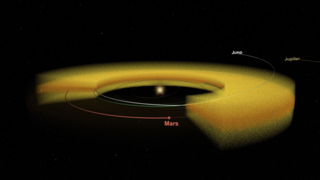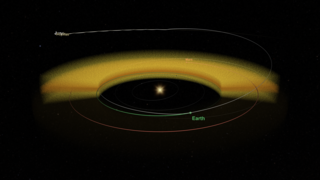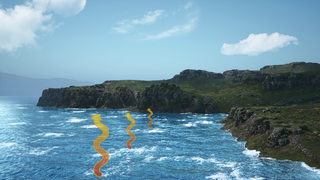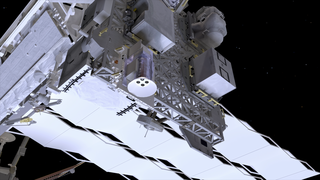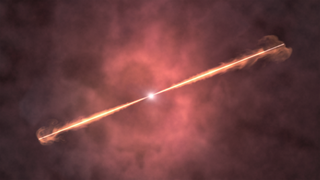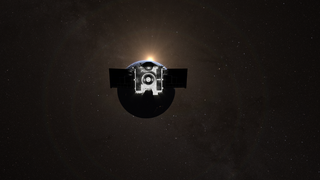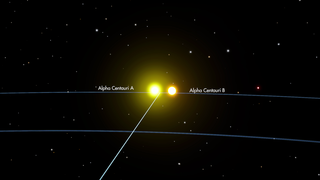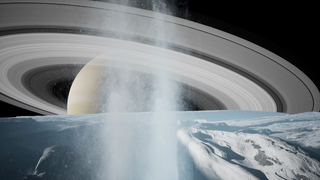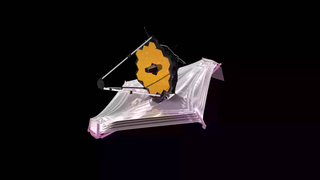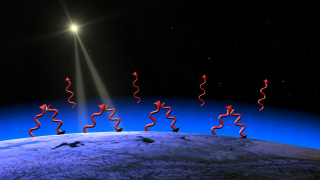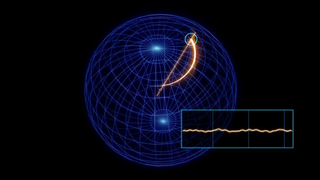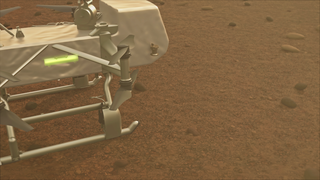Planets and Moons
ID: 20321
Look up to the night sky just before dawn, or after dusk, and you might see a faint column of light extending up from the horizon. That luminous glow is the zodiacal light, or sunlight reflected toward Earth by a cloud of tiny dust particles orbiting the Sun. Astronomers have long thought that the dust is brought into the inner solar system by a few of the asteroid and comet families that venture in from afar. But now, a team of Juno scientists argues that the planet Mars may be the culprit. An instrument aboard the Juno spacecraft serendipitously detected dust particles slamming into the spacecraft during its journey from Earth to Jupiter. The impacts provided important clues to the origin and orbital evolution of the dust, resolving some mysterious variations of the zodiacal light.
Juno Interplanetary Dust: Animations
This page provides artist concept animations of Juno during its trek to Jupiter, and its observations of interplanetary dust impacts along the way. Learn more about this discovery.
Used Elsewhere In
Related
For More Information
Animation Credits
Michael Lentz (USRA): Lead Animator
Dan Gallagher (USRA): Producer
Lonnie Shekhtman (ADNET Systems, Inc.): Writer
Rani Gran (NASA/GSFC): Public Affairs Officer
John Connerney (NASA/GSFC): Scientist
Aaron E. Lepsch (ADNET Systems, Inc.): Technical Support
Dan Gallagher (USRA): Producer
Lonnie Shekhtman (ADNET Systems, Inc.): Writer
Rani Gran (NASA/GSFC): Public Affairs Officer
John Connerney (NASA/GSFC): Scientist
Aaron E. Lepsch (ADNET Systems, Inc.): Technical Support
Please give credit for this item to:
NASA's Goddard Space Flight Center Conceptual Image Lab
NASA's Goddard Space Flight Center Conceptual Image Lab
Short URL to share this page:
https://svs.gsfc.nasa.gov/20321
Mission:
Juno
Keywords:
SVS >> Dust
SVS >> Dust Cloud
SVS >> Jupiter
SVS >> Mars
SVS >> Spacecraft
SVS >> Star Tracker
SVS >> Juno
SVS >> Impactors
NASA Science >> Planets and Moons
SVS >> Conceptual Image Lab
SVS >> Animation
SVS >> Zodiacal Light
SVS >> Interplanetary
https://svs.gsfc.nasa.gov/20321
Mission:
Juno
Keywords:
SVS >> Dust
SVS >> Dust Cloud
SVS >> Jupiter
SVS >> Mars
SVS >> Spacecraft
SVS >> Star Tracker
SVS >> Juno
SVS >> Impactors
NASA Science >> Planets and Moons
SVS >> Conceptual Image Lab
SVS >> Animation
SVS >> Zodiacal Light
SVS >> Interplanetary
